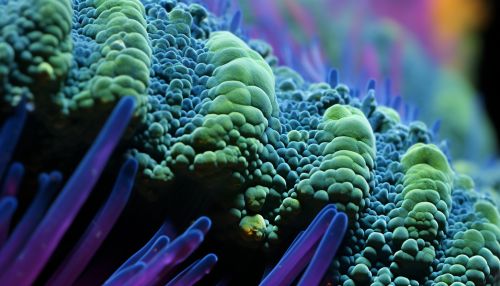Gammaproteobacteria
Classification
Gammaproteobacteria is a class of bacteria within the phylum Proteobacteria. This class is one of the largest and most diverse groups within the bacterial domain. The name "Gammaproteobacteria" comes from the Greek letter gamma, which is used here to denote its position in the Proteobacteria phylum.
Characteristics
Gammaproteobacteria are Gram-negative, meaning they do not retain the violet stain used in the Gram staining method of bacterial differentiation. They are characterized by the presence of several types of rRNA in their cytoplasm. Most species have a rod-like shape, but there are also cocci (spherical) and spirilla (spiral) forms. Many Gammaproteobacteria are motile, using a variety of mechanisms such as flagella, pili, and gliding.


Metabolism
Gammaproteobacteria exhibit a wide range of metabolic types. Many species are heterotrophic, meaning they obtain their energy from organic compounds. Some are autotrophic, obtaining energy from inorganic compounds. There are also species that are mixotrophic, capable of using both organic and inorganic sources of energy. Many species are aerobic, but there are also facultative anaerobes that can grow in the absence of oxygen, and obligate anaerobes that cannot grow in the presence of oxygen.
Ecology
Gammaproteobacteria are found in a wide variety of habitats, including soil, water, and the human body. Some species are free-living, while others form symbiotic relationships with other organisms. For example, some species of Gammaproteobacteria live in the intestines of animals, where they help break down food. Others are pathogenic, causing diseases in humans and other animals.
Taxonomy
The class Gammaproteobacteria is divided into several orders, including Enterobacteriales, Vibrionales, Pseudomonadales, and others. These orders are further divided into families, genera, and species. The taxonomy of Gammaproteobacteria is complex and continues to evolve as new species are discovered and new techniques for classifying bacteria are developed.
Medical relevance
Several species of Gammaproteobacteria are of medical importance. For example, the genus Salmonella includes species that cause food poisoning, while the genus Escherichia includes E. coli, a common inhabitant of the human gut that can also cause disease. The genus Pseudomonas includes species that are major causes of hospital-acquired infections.
Industrial relevance
Gammaproteobacteria also have industrial applications. For example, species of the genus Pseudomonas are used in bioremediation, a process that uses microorganisms to clean up environmental pollutants. Other species are used in the production of biofuels and other biotechnology applications.
Evolution
The evolutionary history of Gammaproteobacteria is a topic of ongoing research. It is believed that the class originated from a common ancestor with other classes of Proteobacteria, but the details of this evolutionary history are still being worked out.
